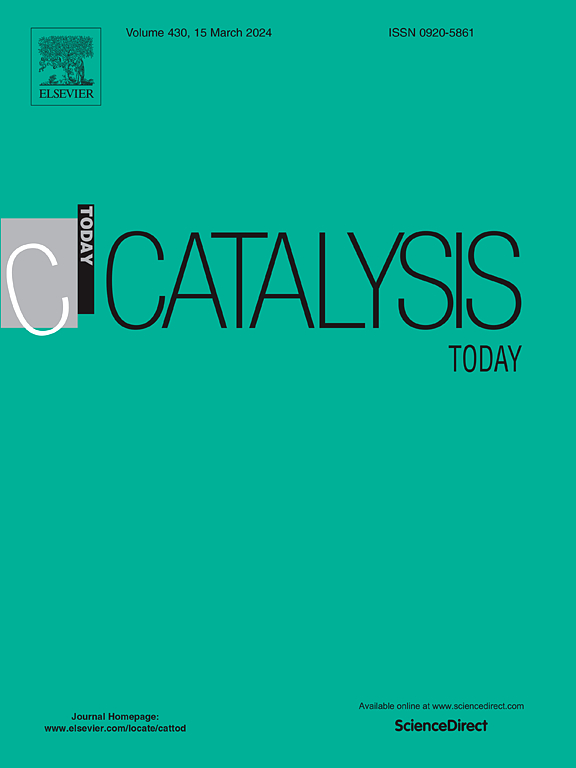Effect of SiO2 support particle sizes on the performance of FeZn catalysts in VR slurry-phase hydrocracking
IF 5.2
2区 化学
Q1 CHEMISTRY, APPLIED
引用次数: 0
Abstract
In order to gain insight into the influence of SiO2 support particle size on the vacuum residue (VR) slurry-phase hydrocracking performance of Fe-based catalysts, a series of FeZn/SiO2 catalysts with varying SiO2 particle sizes were prepared. Characterization results show that the surface area and pore volume of the FeZn/SiO2 catalysts increase with the reduction of SiO2 particle sizes. The metals Fe and Zn species on FeZn/SiO2-S catalyst are more readily reducible via H2-TPR analysis. Notably, FeZn/SiO2-S catalyst presents higher metal dispersion and a greater degree of sulfurization compared to the other catalysts by XRD and XPS. Hydrocracking results demonstrate that the FeZn/SiO2-S catalyst achieves the lowest coke and gas yields (11.9 wt% and 0.4 wt%), respectively, and the highest VR conversion among these catalysts. The superior performance of the FeZn/SiO2-S catalyst in VR slurry-phase hydrocracking is ascribed to its enhanced hydrogenation activity, deriving from the higher dispersion and sulfurization of metals species. This suppresses the aggregation of polycyclic aromatic hydrocarbons in VR and the over-cracking of intermediate products. Additionally, the increased mesopore associated with smaller SiO2 particles facilitates to the diffusion of large VR molecules, further promoting the hydrocracking reaction.
求助全文
约1分钟内获得全文
求助全文
来源期刊

Catalysis Today
化学-工程:化工
CiteScore
11.50
自引率
3.80%
发文量
573
审稿时长
2.9 months
期刊介绍:
Catalysis Today focuses on the rapid publication of original invited papers devoted to currently important topics in catalysis and related subjects. The journal only publishes special issues (Proposing a Catalysis Today Special Issue), each of which is supervised by Guest Editors who recruit individual papers and oversee the peer review process. Catalysis Today offers researchers in the field of catalysis in-depth overviews of topical issues.
Both fundamental and applied aspects of catalysis are covered. Subjects such as catalysis of immobilized organometallic and biocatalytic systems are welcome. Subjects related to catalysis such as experimental techniques, adsorption, process technology, synthesis, in situ characterization, computational, theoretical modeling, imaging and others are included if there is a clear relationship to catalysis.
 求助内容:
求助内容: 应助结果提醒方式:
应助结果提醒方式:


